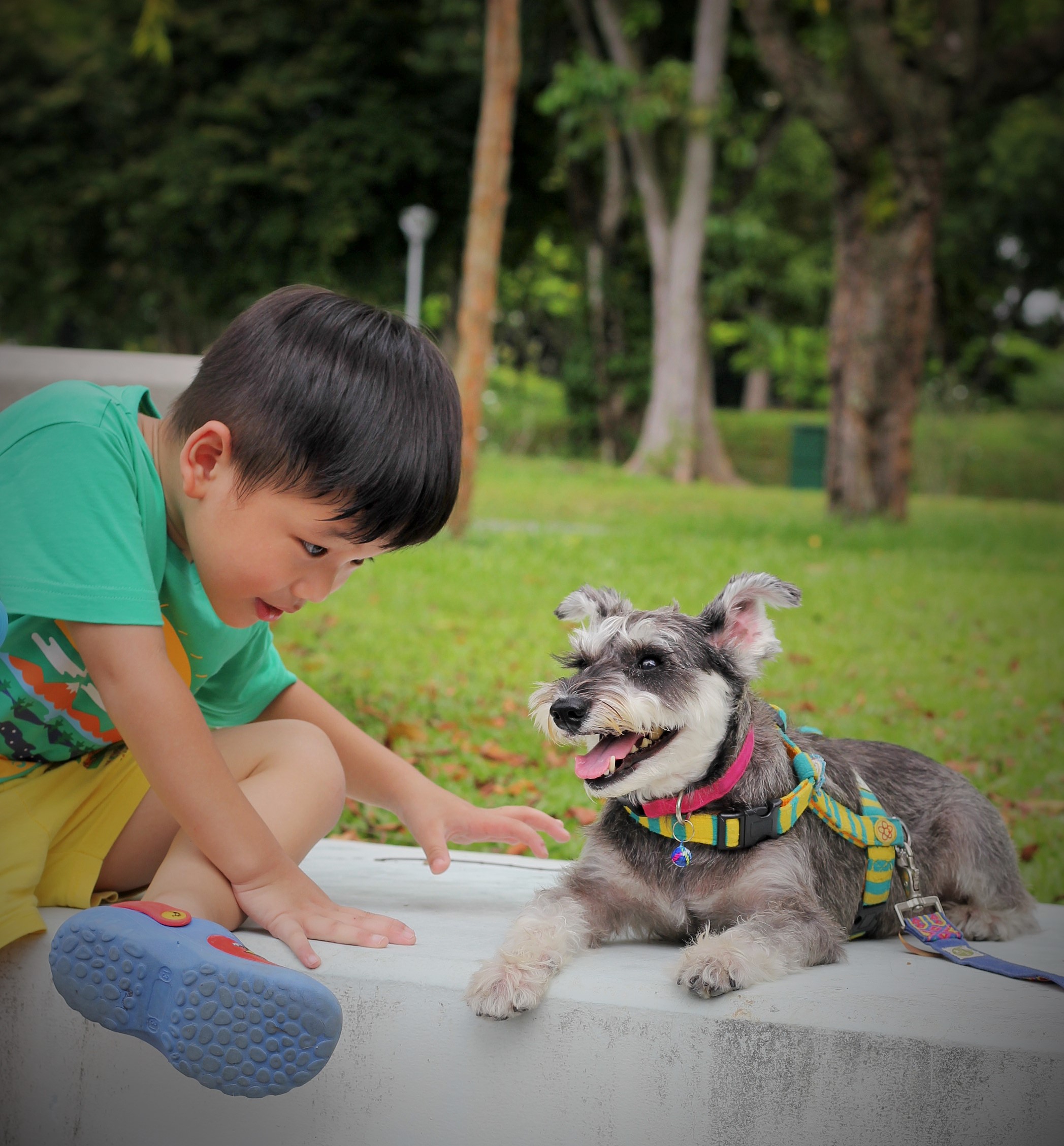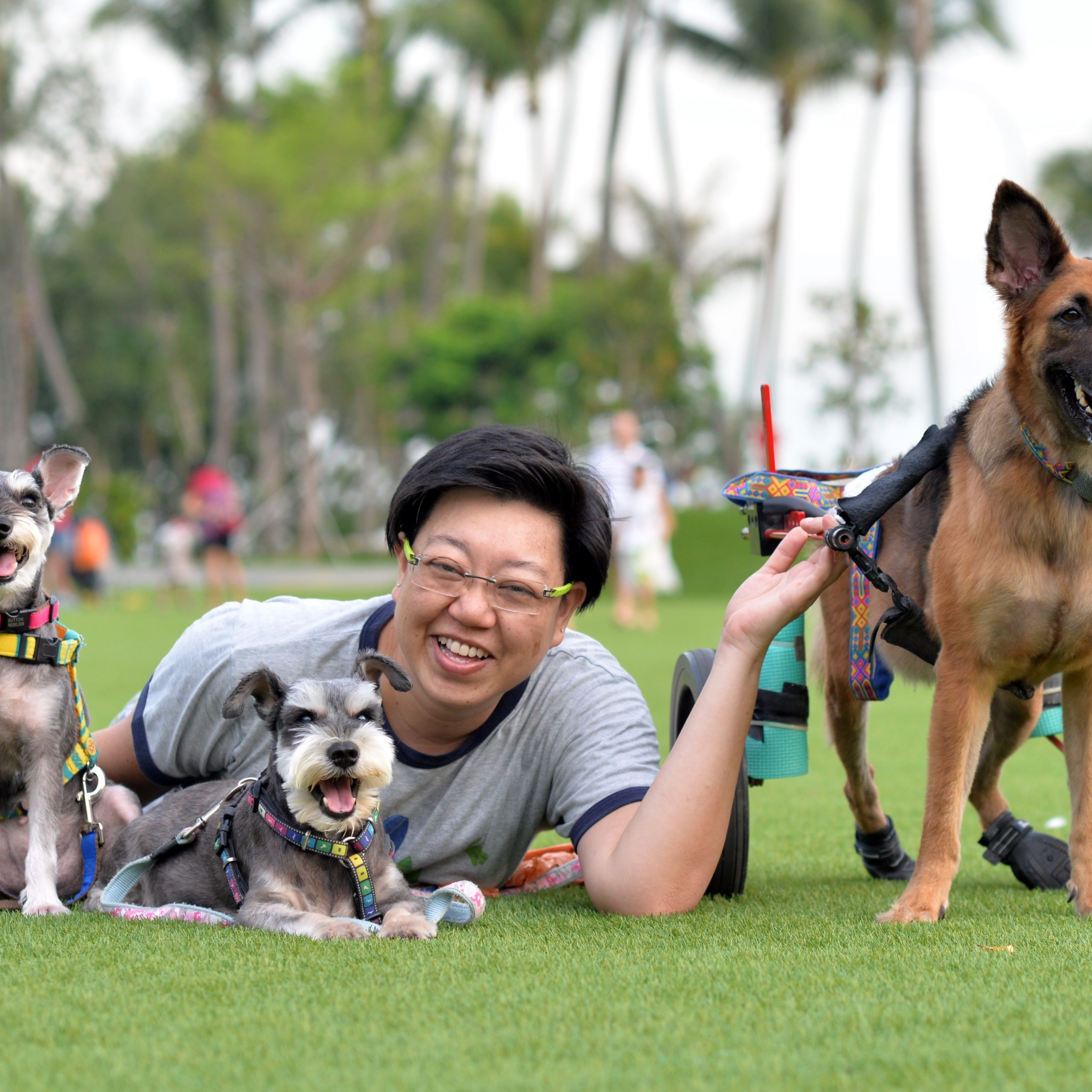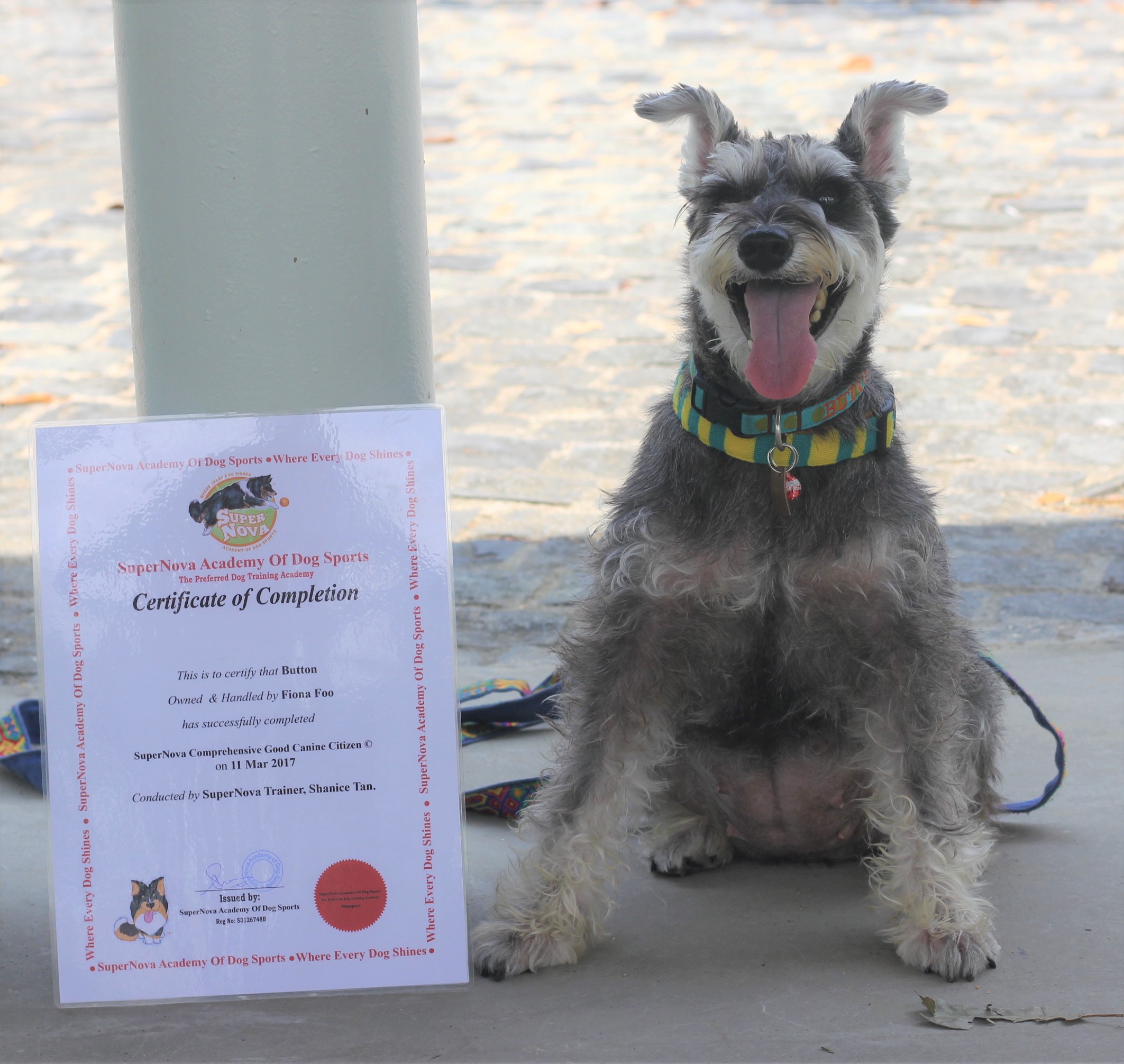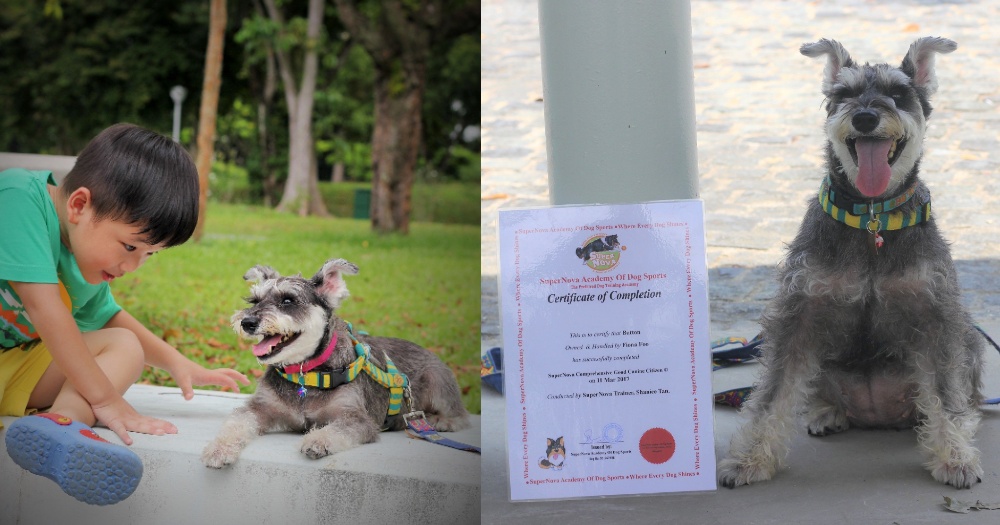Button: The Hokkien Therapy Dog describes the story of an abandoned dog, Button, who was adopted and subsequently trained as a therapy pet who understands fluent Hokkien. Button spent her days visiting Hokkien hospice patients and bringing joy to them, before passing away in 2018.
The author, Fiona Foo, founded Hope Dog Rescue in July 2011, and had a terrible fear of dogs while growing up. Her first dog, Popsicle, helped her overcome that fear, and she now spends her time saving stray and abandoned dogs, fostering them and working to find forever homes for them.
Button: The Hokkien Therapy Dog is published by Epigram Books and you can get a copy here.
An excerpt from the book is reproduced here.
By Fiona Foo
Button’s journey with Hokkien started soon after she joined the family in 2016.
In her first few months at home, Button had no language. She behaved as if she were deaf. It was apparent that no one had ever talked to her.
When we spoke to her, she stared blankly at us and seemed to have no inkling of what was expected of her. Her saving grace was that she wagged her tail every time we called her. It was akin to me smiling at work whenever my boss called me, regardless of whether I knew what to do!
I tried speaking to her in English and Mandarin, to check if she perhaps understood. Still, she stared dumbly at me. That was when I decided I would speak Hokkien to her.
I thought that since she didn’t understand any language, we might as well start with a brand new one! Although I did not grow up speaking Hokkien, I was pretty familiar with it.
My mom is Hokkien, though we spoke English at home. My grandma used to speak to me in the dialect while I was growing up. I was also surrounded by it—at hawker centres, coffee shops etc.
Hokkien is rather widely used, so it became the chosen language for Button.
It would be cool if my dog's Hokkien was better than yours
After a few weeks, I also saw how calm and laid back she was, and thought maybe there was a chance that she could be an animal-assisted therapy dog.
I had long been fascinated with service dogs and having an animal-assisted therapy dog would be a dream come true. I could nurture her, if she was willing to grow.
And so that’s when I made a concerted effort to speak to Button entirely in Hokkien. I thought that because most senior folks spoke or understood Hokkien, Button would get along with them if she were to work in an old folks’ home or a hospice.
Youngsters these days seem to have lost their cultural roots and can’t speak a dialect even if their lives depended on it, so I thought it would be cool if my dog’s Hokkien was better than yours.
 Image via Michel Damaris.
Image via Michel Damaris.
And so my mom and I spoke to her in full Hokkien during and outside of her basic obedience classes, and she picked it up with ease.
Within months, her Hokkien was impressive and my friends were coming over “to learn Hokkien from a dog”.
Giving Hokkien commands to Button is a good ice-breaker
When we went out, more often than not, people would come up to us, coo at Button’s eyelashes and attempt to tell her to “sit”.
When I said that she only understood Hokkien, they stared at me as though I were pulling their leg.
They’d continue to say “sit” and Button continued to just stare at them. Finally they would give up and ask me, “How do you say ‘sit’ in Hokkien?”
As soon as I answer, “Zay”, Button sat promptly, looking cute and pleased with herself.
Sometimes I encouraged the unbelieving strangers to go ahead and give a command in Hokkien. Then they too would ask her to zay or lai. When they said zay, Button immediately sat and their reaction was either amazement or amusement.
Button politely remained seated till I asked her to kee lai (get up). I would also tell them to say hwa chiu (hold hands), the Hokkien version of another common command for dog owners, “paw”, and when she offered her paw, they were shocked! It was a good ice-breaker.
When I was in school eons ago, I spent my days daydreaming and staring out the window until one fine day, a piece of chalk flew at me from the front, jolting me back to reality.
During my time, it was perfectly fine for the teachers to throw things at children. If a teacher did that now, she’d have a lot to answer for!
During Button’s basic obedience class, she was exactly like how I used to be in school and it made me wonder if she knew I was lazy at heart.
Her class was conducted at Bishan Park and she spent every lesson either staring at other dogs strolling with their owners, or watching kids scoot past us. Sometimes she just stared blankly at a faraway grass patch.
 Image via Andrew Tan.
Image via Andrew Tan.
Basically she looked at everything except where she was supposed to and she did everything that she wasn’t supposed to.
Tell her to kiah (walk) and she would zay. Tell her to tway and she also zay. We were getting worried that she was not going to pass the test at the end and fail the class miserably.
The trainer was very understanding. She understood that some dogs weren’t comfortable in public or just shy by nature, so she told us to film Button doing all her basic commands at our void deck and show her the videos later to prove that Button could do it.
So every night we trained, we filmed, we laughed and we pleaded with Button to cooperate. Button made us look like fools. Fortunately, being the kind, compassionate dog that she was, after twenty attempts, she would give us face and do it correctly once.
 Image via Michel Damaris.
Image via Michel Damaris.
Button could understand fluent Hokkien in full sentences
Having a dog that understood Hokkien was an amazing achievement in my life.
I know of elderly dog owners who speak Hokkien or Cantonese to their dogs and their dogs could comprehend what they say. But I felt Button was one level up; she could understand fluent Hokkien in full sentences and I could converse with her, exactly as if I were talking to my mom.
Like I would say, “Jip pang keng koon”, and she would go straight into the room to sleep, or “Button, jip tian twee”, and she would enter the lift.
There were days when my friends visited and heard me grumbling in Hokkien in the kitchen and they thought I was talking to my mom. Upon entering the kitchen, they never failed to be amused to see Button just sitting placidly and listening to my nagging.
Button was my pride and joy; not only did she understand fluent Hokkien but she was also a rescued dog, proving to everyone that you do not need to buy a dog to have it well trained.
She wasn’t young either, driving home the point that it is possible to teach a not-so-young dog new tricks.
But most of all, she was Singapore’s first Hokkien gao (dog) to be certified in Hokkien in basic obedience and the first to be assessed in Hokkien for her temperament to be an animal-assisted therapy dog.
Top image via Michel Damaris.
If you like what you read, follow us on Facebook, Instagram, Twitter and Telegram to get the latest updates.
